When it comes to getting rid of toxic chemicals in the home, the area where you sleep often gets overlooked.
There’s a lot of emphasis on toxins in food, water, and personal care products (and rightly so). But there are also potentially dangerous toxins hiding in bedding that can have a negative impact on your health.
Even if you don’t get the recommended 7-8 hours of sleep each night, you’re still going to spend a large portion of your life in bed. Cleaning up what you’re sleeping on and under is very important to make sure you can get a restful and healthy night’s sleep.
And it all starts with knowing what’s really in your bedding.
The Big Three + A Look at VOCs
Sleep is meant to be a time of healing and repair. Even though it feels like you’re inactive while sleeping, your body is hard at work doing things that don’t happen while you’re awake.
Sleep is vital for your whole body but especially for your mind.
Not only is getting enough quality sleep needed for a healthy mood, focus, and general cognitive function, research also suggests that your brain cleanses itself as you rest of toxins that have built up during the day. That’s one reason why a lack of sleep can cause brain fog and other cognitive issues.
Given the importance of sleep and its potential detoxifying effects, exposing yourself to toxins in bedding is very counter-productive.
Unfortunately, this is all too often the case.
Mattresses, pillows, and sheets can be thought of as the “big three” when it comes to potentially toxic bedding. There are multiple chemicals, including known carcinogens, that are frequently hidden in these common household items.
Some of the most highly marketed choices- like memory foam mattresses and synthetic down pillows- are actually the worst for your health.
This is yet another under-regulated industry where it’s up to you as the consumer to learn the facts so that you can choose better options.
What Are VOCs? + Why They Matter
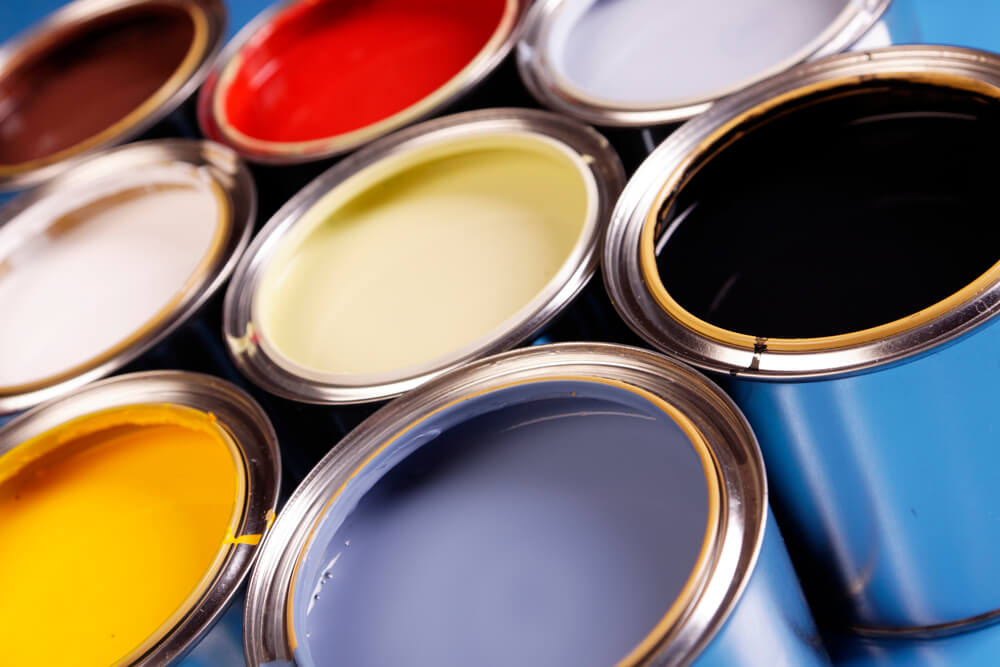
While there are many potential chemicals hiding in bedding (as we’ll get into), VOCs deserve a special spotlight.
Short for volatile organic compounds, VOCs are manmade chemicals found in many household products. They often give the strong smell to just installed carpeting, a freshly painted room, new cars, etc.
Marketers have convinced many people that this is the “new” smell (as in ‘new car smell’) and given it a positive spin. However, these chemicals are bad news for your health and can cause both short- and long-term problems.
One of the biggest problems with VOCs is that they are easily emitted as gases from products (hence the strong smell). Even worse, they frequently become concentrated indoors. The EPA estimates an average concentration that’s 2-5 times higher indoors than outdoors and sometimes as much as 10 times higher.
The potential effects of VOCs?
Respiratory issues, headaches, eye and throat irritation, liver damage, kidney damage, and higher cancer risk. Definitely not something you want to be breathing in on a regular basis!
Here’s a look at where you’ll most likely find VOCs in bedding, plus other dangers to look out for.
Where Chemicals Are Lurking in Mattresses
Polyurethane Foam
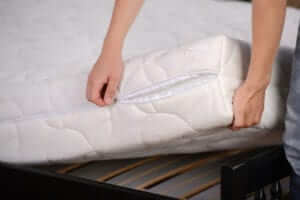
Many mattresses, especially those with memory foam, are made with a fill called polyurethane foam or ‘polyfoam’.
Polyurethane is one of the biggest sources of VOCs in mattresses and is concerning because these chemicals are released to the atmosphere of your home through a process called off-gassing. This simply means they are released in vapor form and can be breathed in.
Even more concerning is research that indicates VOCs from mattresses can be released at higher levels when warmed by body heat.
Another issue is that polyurethane can release chemicals known as polybrominated diphenyl ethers (PBDEs) as it breaks down. PBDEs are known to be persistent in the human system (even being found in breast milk) and toxic.
Some states are even banning materials that release PBDEs (mainly flame retardants), but mattresses have so far escaped this ban.
Flame Retardants
Because of a California law from 1975, manufacturers must take steps to make mattresses flame retardant. The intent was to prevent household fires from causes like a candle dropped on the bed.
Unfortunately, the result was that chemical laden materials (like polyurethane) and chemical applications are used to make mattresses flame retardant. These flame retardants are the biggest source of PBDEs and similar chemicals known as polybrominated biphenyls (PBBs).
Not only are these chemicals a problem for you in your home, they can also get into the air, water, and soil during the manufacturing process. They become a toxin in water and can build up in fish and mammals.
Anti-Pest Applications
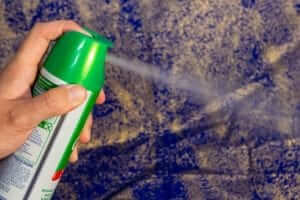
In addition to making mattresses flame retardant, manufacturers also add chemicals to repel pests (including bed bugs) and bacteria. This means more VOCs and other chemicals that companies don’t have to reveal.
One common insecticide added to the lining of mattresses is called boric acid. It’s most frequently used as a roach killer and is potentially poisonous.
Synthetic Latex
Synthetic latex is another commonly used product in mattresses because of its ability to mold to your body.
While natural latex is made from rubber trees, the synthetic version is made with two petroleum-based compounds: styrene and butadiene. The result is a manmade product known as styrene-butadiene rubber (SBR).
Once again, synthetic latex is another source of VOCs due to the chemicals used during manufacturing.
The compounds used to make it aren’t so great, either. Butadiene is listed as a potential carcinogen, eye and skin irritant, and harmful to the respiratory and cardiovascular systems. Styrene can harm the central nervous system and may increase your risk of lymphoma and leukemia.
Taking a Closer Look at Your Pillow
More Flame Retardants & Polyurethane

Just like with mattresses, pillows are often made with flame retardant materials. Foam pillows, especially, are likely to be made of polyurethane and contain VOCs and PBDEs.
Not only are PBDEs persistent (as mentioned), they can potentially disrupt thyroid hormones and may cause cancer. They have also been found to cause neurodevelopmental deficits, which includes ADHD, autism, learning disabilities, and vision or hearing impairments.
Look Out for Formaldehyde
Formaldehyde is a known human carcinogen and something you probably wouldn’t expect to find in your pillow. However, it’s one of several chemicals that can be added while making memory foam (which means it might be present in your mattress, too).
Formaldehyde is a chemical you definitely want to avoid. It not only potentially causes cancer, it can also cause skin irritation and respiratory distress.
Chemical Deodorizers
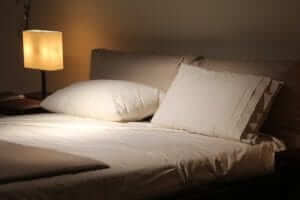
Fragrance is a toxin often found in the cosmetic industry, but there’s a chance that your pillow has been deodorized, sometimes with added fragrance, to mask the smell of the chemicals used to make it.
Of course, you know what this means: more chemicals.
Once again, manufacturers don’t have to reveal all the synthetic compounds that go into their products, so there could be any number of added toxins.
Fungi
Fungi in pillows?
Research from the University of Manchester says yes. A team tested samples from both synthetic and feather pillows. They found fungi on all of them and 4 to 16 different types on each pillow.
One of the most disturbing types of fungi found was one known as Aspergillus fumigatus. This specific fungus can cause lung infections, although this is most likely to happen in those with compromised immune systems or existing lung conditions.
However, A. fumigatus can be a special problem for asthma sufferers, since it has the potential to worsen asthma symptoms.
Interestingly, the synthetic pillows had more species of fungi than the feather ones and were more likely to contain A. fumigatus.
Are Your Sheets Safe?
Beware of Chemical Treatments
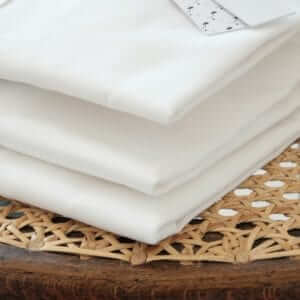
Certain types of sheets are more likely to have chemical treatments than others.
The biggest ones to watch out for are those labeled wrinkle-free, anti-static, or shrinkage-free. These types of sheets are often finished with a chemical treatment that includes formaldehyde. This both heightens your chance of skin irritation and opens up the potential for long-term health problems.
Synthetic Materials Aren’t the Best
Sheets can be made from synthetic fibers that are used to feel good to the touch and/or to cut costs. Frequently, these fibers don’t allow your skin to “breathe” like many natural fibers do. They are also likely to be processed with chemicals, since they are manmade.
Also keep an eye out for “blended fiber” sheets. These may contain natural fibers, but they have been mixed with synthetic fibers (sometimes at an undisclosed rate).
Natural Materials May Have Pesticides
Natural fibers are a much better choice for sheets, but you should be aware that crops like cotton and flax (used to make linen) can be grown using pesticides. There are many dangers of pesticides, including the possibility that they can be absorbed through or affect your skin.
Cotton is also a major GMO crop, which makes it likely to be sprayed with a larger amount of pesticides.
Tips for Cutting the Toxic Load in Bedding
Open Windows Frequently

Though simple, opening the windows in your bedroom and the rest of your home is one of the best ways to give VOCs a way out. This is something you can do immediately while you consider other ways to tackle toxic bedding.
Especially important is the ten or so minutes before you go to sleep so that the atmosphere you breathe at night is less chemical-laden.
Better Sheets
When it comes to sheets, the best way to avoid toxic bedding is to buy materials made of organic natural fiber. Organic is especially important if you want to buy cotton sheets because it means they are sourced from a non-GMO crop.
Cotton and linen are good choices, and bamboo sheets are one of the newer options out there. Just make sure sheets are 100% natural fiber. Avoid blends because they will contain synthetic fibers.
Also, steer away from sheets that make claims like “anti-wrinkle” because this usually means a chemical treatment has been applied.
Toxin-Free Pillows
Because synthetic materials like polyurethane can cause so many problems (and harbor more fungi), it’s best to opt for a pillow with a natural filling and casing. There are many options out there, depending on your needs.
Both organic wool and organic cotton pillows are breathable and often come in light to firm filling options. Wool is naturally flame resistant and is typically encased in a cotton casing so you don’t have wool against your face.
Kapok is a soft, fluffy material sourced from Ceiba pentandra trees. It’s a good hypoallergenic alternative to feather pillows and is also mold and water resistant. Another bonus is that pesticides are rarely used on kapok trees.
If you want something firmer, try a buckwheat or millet pillow. Both of these (gluten-free) grains make hypoallergenic pillows that can be adjusted around your head and neck.
A Cleaner Mattress
While you may not be in the market for a new mattress yet, when that time comes it is important to consider several factors.
First, avoid polyurethane and chemical fire retardants at all costs. These are where the bulk of VOCs are hiding. Choose natural materials or ones that have been tested using a VOC meter to make sure no off-gassing is occurring.
There are new strategies for making mattresses fire-resistant that don’t involve harmful chemicals. Silica-based fire blockers are one option as are nanoparticles. (Though whether nanoparticles are completely safe is still being studied.)
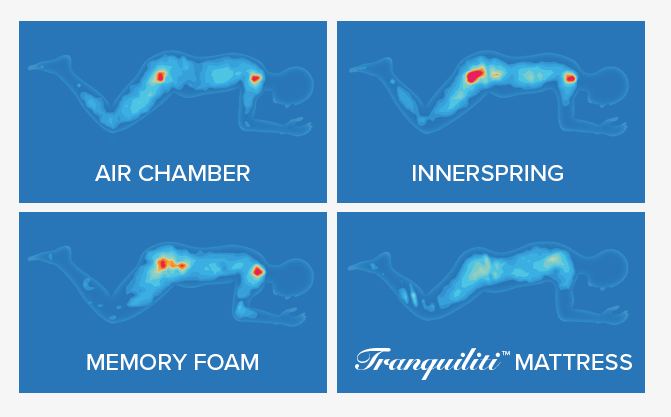
Also, beware of greenwashing in the mattress industry. Soy foam mattresses are marketed as being eco-friendly, but they are often only 10-20% soy with the rest being polyurethane foam.
If you are actively looking for a new mattress and ready to invest in better sleep, there’s no better option than the Tranquiliti mattress from Organix Bed.
It has been tested for VOCs and proven to be non-toxic with no off-gassing.
The mattress itself is made of a revolutionary Gel Matrix that is both firm enough to support your spine and soft enough to avoid pressure on hips or shoulders. The Gel Matrix is covered by a 100% organic comfort layer and protected with silica-based fire blockers.
This mattress comes with an unheard of 20 year warranty and works for both hot and cold sleepers.
Learn more about the Organix Bed mattress here to improve and deepen your sleep.
Detoxing Your Sleep
Getting rid of chemicals that you may be eating, absorbing, or breathing in is extremely important for your health. Potentially toxic bedding should not be overlooked in this regard, since we spend around 1/3 of our lives sleeping.
Switching out your sheets and pillows cuts down on chemicals that are directly touching your skin as well as off-gassing into the atmosphere of your bedroom. Investing in a non-toxic mattress is a big step but can be extremely helpful for better, chemical-free sleep when the time is right.


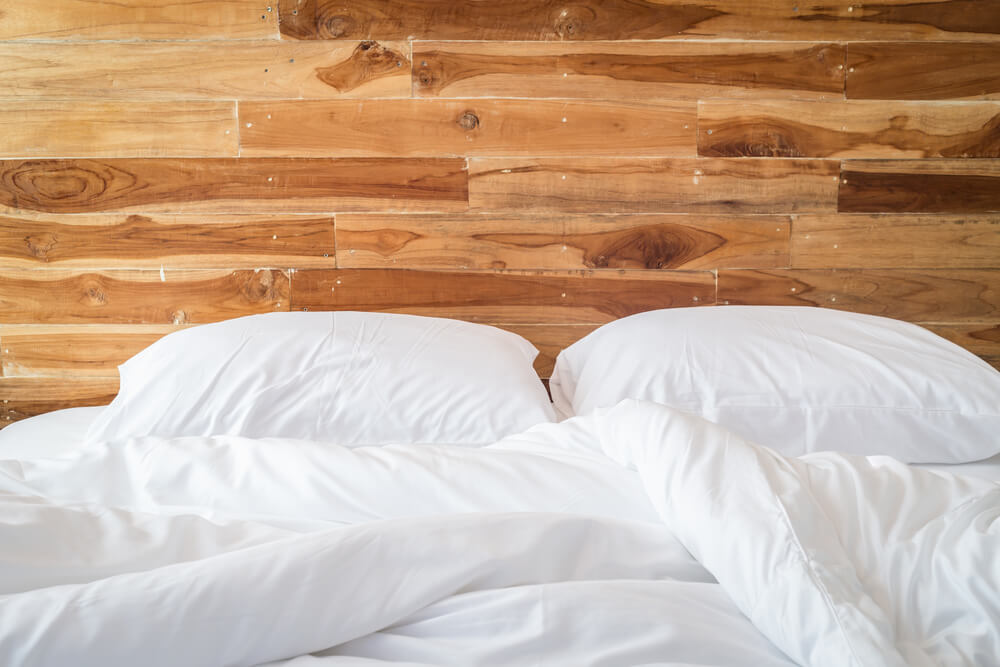
Lookin for a non toxic mattress.
Click the Organixx Mattress link above toward end of article… best I found by far (and best sleep of my life on it)
Brian, Do you have any hints on where to look for a wool pillow? I’m looking for a flat pillow.
Hi Deb, here’s one to consider: https://www.thefutonshop.com/organic-wool-bed-pillows?utm_source=google_shopping&gclid=CjwKCAjwtpGGBhBJEiwAyRZX2u4Q91bFln9R6YpklfTlPgLOki17Li9C3uDITYcmLflGS9cQnUdgcRoC8XwQAvD_BwE
Love your information. Realize that folx like me who live below the poverty line are not your target demographic, but hoping that you have some suggestions for for those of us living with multiple physical issues and not enough resources. Need new bedding. Anything possible with monthly income under $975?
Hi Robin, thanks for the kind words. This is important info everyone deserves to know, though I realize the “ultimate” solutions like a new mattress can sometimes be out of reach. If you know my story, you know I came from a very “tight-resource” background, where earlier in life where my oldest son was a baby, for example, had to sell a CD collection just to keep heat on another month. I do get it, but feel people deserve the full facts. That said, that is also why I try to provide other key steps beyond the “ultimate” that may cost too much for some. For example, if you can replace your pillows alone with toxin-free / organic choices (because it is right there by your face / being breathed in nightly), and try to open your windows frequently if possible, those are very good steps. I also don’t want people to “worry” if they are not taking ALL the best steps right away… any seemingly small steps in a better direction can provide real help for health / well-being 🙂
very uuseful, lesser known side
Thank you for the information. Do you have a reliable source to buy cotton organic pillows and “kapok” pillows?
Also, right now Costco has organic cotton sheet sets (queen size) for either $29.99 or $39.99, can’t remember which. They are very soft and SO cheap! If you don’t have a Costco card, you probably know someone who does who would get them for you or take you there to get them yourself.
This is such helpful information and every little bit we can do helps.
Hi Brian
Thanks for the article.
Do you have any reference as to where i can purchase a non-toxic mattress?
Hi Sandra, see ORGANIX BED right above the “Detoxing Your Sleep” section here in this article https://theartofantiaging.com/dangers-of-toxic-bedding-choose-better-options/